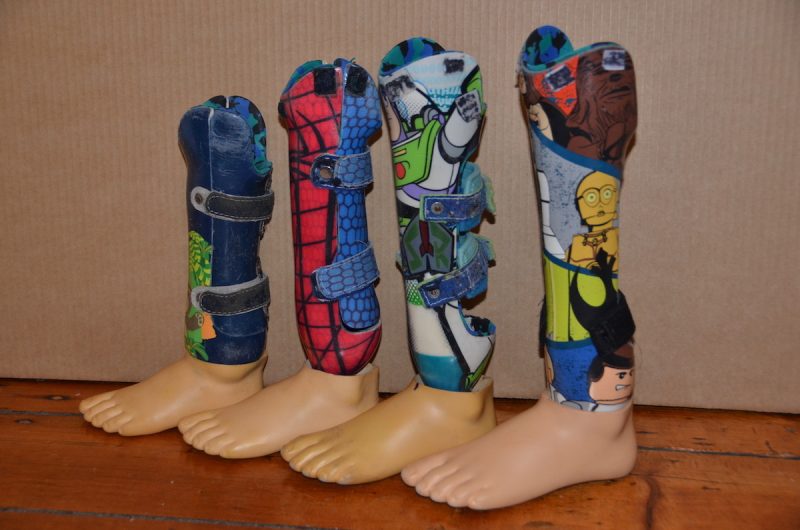Prosthetic limbs for children
A prosthesis is an artificial body part that is worn to replace all or part of an arm, leg, hand or foot. Users choose a prosthesis to replace the function of the missing limb or for cosmetic reasons.
Not all children wear a prosthesis. Some wear a prosthesis for most of their life. Some children will never wear a prosthesis. Others only wear a prosthesis for certain periods of time or for specific activities.
Deciding if a prosthesis is the right option for your child
Your child’s decision to wear a prosthesis or not will depend on what they want to do. As a first step, you should discuss your child’s aims and needs with your prosthetic provider so that they can find the most suitable device.
For example: if your child has a lower limb difference then a prosthetic leg can help with mobility and the way they get around their home, school or community. Most people with lower limb differences use a prosthesis every day. The kind of prosthesis will depend on the age of your child and their level of mobility. For younger children prosthetics are quite basic. As they grow, a wider choice of prosthetics becomes available.
Children with an upper limb difference may decide not to wear a prosthesis every day. They may use a prosthesis only when doing a specific activity such as a sport, playing a musical instrument or drawing. Upper limb prosthetics are usually customised to suit the activity.

Organising a prosthesis for your child
Your child’s prosthesis is fitted and maintained by a prosthetist at a hospital or private limb clinic. To better understand how the device could look and work, ask your prosthetist to show you and your child some examples.
You will go to several appointments to measure, fit and check on your prosthesis.
Assessment appointment – measuring your child
This meeting will involve taking measurements and possibly a plaster cast of your child’s residual limb. This cast is then used to make a socket that is shaped to fit your child. The casting process does not hurt or take very long. After the assessment it may take a couple of weeks before you move to the next stage – the fitting.
Fitting appointment – trying the prosthesis on
At this meeting your prosthetist will fit the prosthetic socket on to your child to ensure it is fitting correctly. At this time that the prosthetist can make changes to the socket to ensure its comfortable and fitting well. This is usually done by what is called a check socket. A check socket can be adjusted prior to making the final socket. If a child is being fitted for a lower limb prosthesis, the prosthetist will check the alignment and height of the prosthesis.
Review appointment – checking that the prosthesis still fits
As your child grows their prosthesis will need adjustments – probably every 3 months to start with, or more frequently if a growth spurt occurs. But appointments do reduce over time. When your child outgrows their socket a new one will be made.
Getting the most out of my child’s prosthesis
It will take time for your child to adjust to life with a prosthesis. The whole family can help by getting involved. As your child grows they will need the prosthesis to be adjusted and/or a new prosthesis will need to be made.
